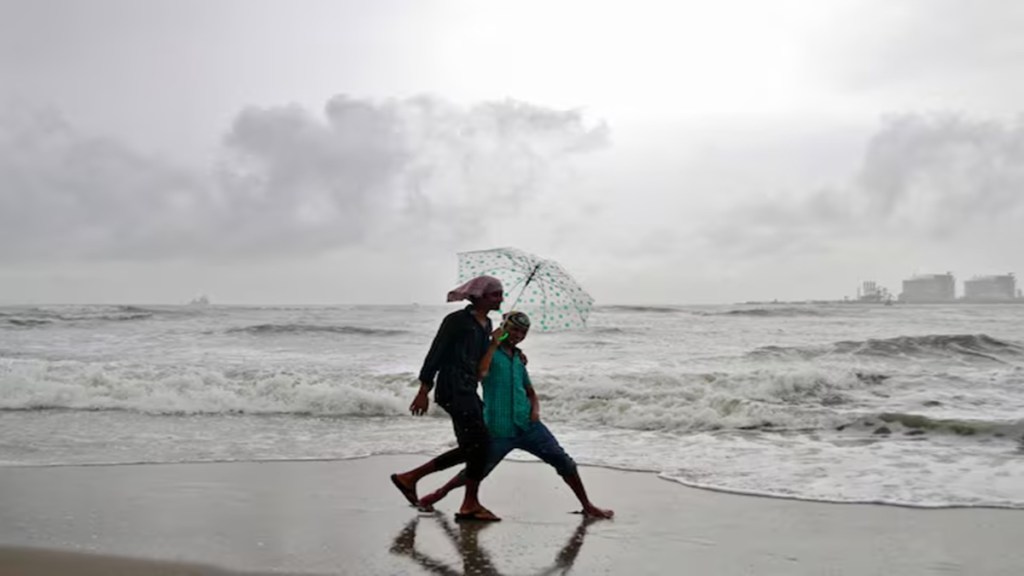The southwest monsoon set over the Kerala coast on Saturday, eight days ahead of the normal date of June 1, India Meteorological Department (IMD) said. This is the earliest date of monsoon onset since 2009 when it entered Kerala on May 23. The earliest onset date this century was May 18, 2004.
IMD in its earlier forecast had said the southwest monsoon is likely to hit Kerala coast on May 27. The forecast of early arrivals of monsoon by the met department had come with a model error of +/- four days. The met department has predicted “heavy to very heavy rainfall likely to continue over west coast—Kerala, Karnataka, coastal Maharashtra and Goa—during the next seven days with possibility of extremely heavy rainfall over coastal Maharashtra, Goa and Madhya Maharashtra on Saturday and coastal and Ghat areas of Karnataka during May 24-27.”
On the basis of the operational forecast during 2005 to 2024 on the onset of monsoon, IMD has stated that their forecasts were on time with the exception of 2015.
Weather scientists have said at least 60% of the 14 designated weather stations across Kerala and adjoining areas must record rainfall of 2.5 mm or more for two consecutive days for the declaration of monsoon.
“The monsoon will continue to rapidly advance over the region and northeast India, covering more parts of Karnataka, Tamil Nadu, Andhra Pradesh, Goa, South Maharashtra, and the northeastern states by May 27,” Akshay Deoras, research scientist, National Centre for Atmosphere Science, University of Reading, United Kingdom, told FE.
However, he said a high-pressure region is forming over western Russia and it will tweak weather patterns in such a way that a lot of dry air from surrounding arid regions such as Afghanistan and Pakistan will get pumped towards the Arabian Sea and India.
“This is likely to block the monsoon progression between May 27 and around June 5 as per the current forecast,” Deoras said. Typically, the monsoon, after onset over Kerala coast in early June, covers the entire country by July. The monsoon rains start gradually receding from the northern region in the middle of September.
The adequate rainfall boosts hopes of robust agriculture-sector output for a second year in a row, as kharif sowing, which starts with the onset of rainfall, accounts for about 60% of the crop production. Monsoon rains also provide soil moisture for the winter crops.
Last month, IMD predicted “above normal” monsoon rainfall during June-September this year, with 89% chance of the rains being in the “normal-to excess” range.
In terms of regional distribution, the met department said ‘above-normal’ rainfall is expected over most parts of the country, except the northeast, parts of Bihar and Tamil Nadu.
“This year’s rainfall during the forthcoming monsoon season is likely to be 105% of the benchmark long period average (LPA) with an average error margin of +/- 5”, Mrutyunjay Mohapatra, director general, IMD, had said.
Given the forecast of ‘above normal’ monsoon rainfall, the government has set a record target of 354.64 million tonne (MT) for food grains production in the 2025-26 crop year (July-June).
Though higher food grains production increases the chances of another year of high growth in agriculture, the gross value added (GVA) in this primary sector of the economy is also a function of prices fetched by the farmers and other stakeholders.
Experts said the link between the quantum of rainfall and farm production has over the years become less remarkable, but the distribution pattern still has a significant bearing on crop yields.
In 2024, the monsoon rains were ‘above normal’ with cumulative precipitation of 108% of LPA as predicted by the weather department initially. This was the best monsoon season in four years, and followed patchy ‘below normal’ monsoon rainfall of 94% of benchmark in 2023.
Rainfall in the range of 96-104% of LPA is considered “normal” and 105-110% ‘above normal’. The LPA is the average rainfall received during 1971-2020 at 86 centimetres.

